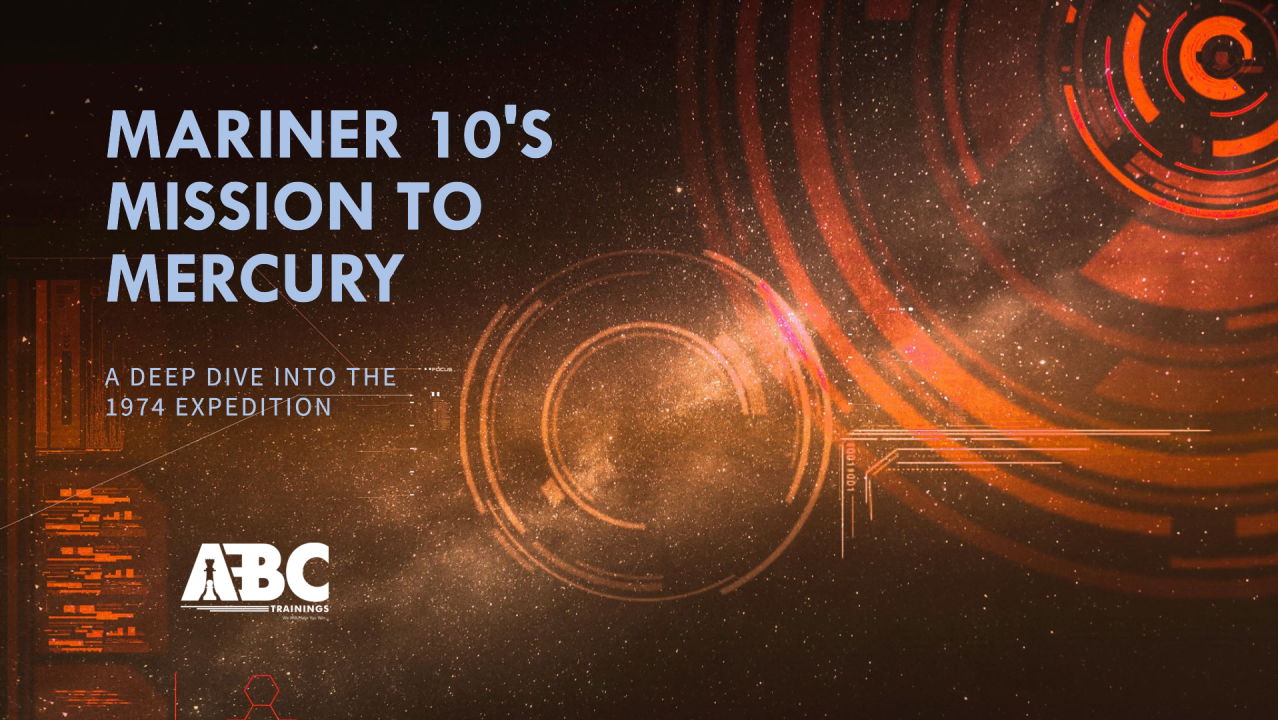.svg)
.svg)

For ABC Trainings, a leader in CAD, CAM, and Building Design software training, the past holds valuable lessons for the future. In 1974, NASA's Mariner 10 mission achieved something once thought impossible: the first successful flyby of the elusive planet Mercury. This wasn't just a victory for space exploration; it was a testament to the ingenuity of early space engineers working with the computing power of their time.
A Technological Balancing Act
While the design of a modern spacecraft like BepiColombo utilizes cutting-edge software suites, Mariner 10's creation relied on the workhorse of scientific computing: Fortran. This text-based programming language, known for its efficiency and focus on numerical calculations, was the primary tool for defining the spacecraft's structure, propulsion systems, and scientific instruments.
Left: Image of Mariner 10 highlighting its scientific instruments. Right: Mariner 10’s trajectory through the inner solar system.
Beyond Fortran: A Software Arsenal
Fortran wasn't the only software in Mariner 10's engineering arsenal. Here's a glimpse into the tools that helped bring this mission to life:
It's important to remember that these early software tools were far less user-friendly and visually intuitive compared to today's sophisticated CAD (Computer-Aided Design) and CAE (Computer-Aided Engineering) suites. However, they laid the foundation for the powerful design environments that ABC Trainings offers today.
Mercury probe - early version of Mariner 10
The Gravity Assist Maneuver: A Daring Innovation
One of Mariner 10's most significant contributions to space travel wasn't software-related, but a brilliant use of celestial mechanics. The spacecraft employed a gravity assist maneuver, leveraging the gravitational pull of Venus to alter its trajectory and achieve the necessary speed to reach Mercury. This technique, commonplace today, demonstrated the power of orbital mechanics and paved the way for more efficient deep-space missions.
Mercury Revealed: A New World Unveiled
Mariner 10 flew by Mercury three times, capturing the first-ever close-up images of the planet's surface. These images, transmitted back using early communication protocols, showcased a cratered world, battered by the Sun's relentless heat on one side and shrouded in perpetual darkness on the other. The data collected also provided valuable insights into Mercury's tenuous atmosphere and unique magnetic field.
A Legacy of Inspiration
Mariner 10's success opened the door for future Mercury missions, like MESSENGER and BepiColombo. The mission serves as a reminder of the incredible strides made in space exploration and the crucial role of software in pushing the boundaries of the known. The tools used for designing modern spacecraft would be unrecognizable to the engineers who created Mariner 10.
The ABC Trainings Connection
At ABC Trainings, we understand the power that advanced design software places in the hands of engineers. The tools we offer, encompassing the latest developments in CAD, CAM, and Building Design software, allow them to create complex and innovative structures with unparalleled precision. While the software used for Mariner 10 may seem primitive today, it laid the foundation for the incredible advancements that shape the future of space travel.
The Takeaway
Mariner 10's 1974 flyby wasn't just a mission; it was a testament to human ingenuity and the power of early software tools. The mission's success serves as an inspiration for the next generation of space pioneers who will utilize the power of cutting-edge design software offered by institutions like ABC Trainings to explore the universe further.
Copyright © 2025 ABCTrainings - All rights reserved